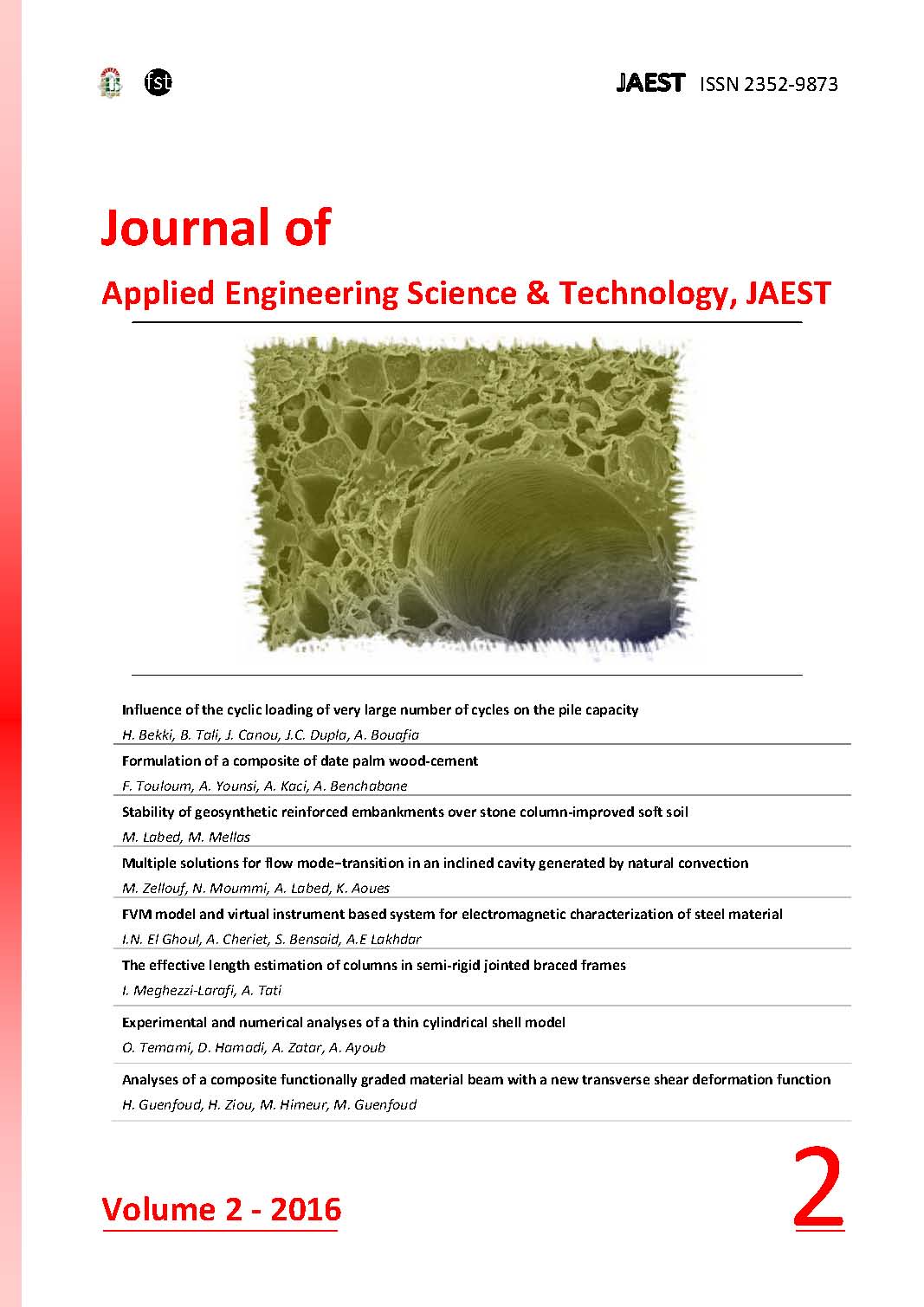DOI:
https://doi.org/10.69717/jaest.v2.i2.43Keywords:
Functionally Graded Material, Power-law, Finite Element Method, Timoshenko’s beam, Shear functionAbstract
In the present paper, we offer a higher-order shear deformation theory for bending of functionally graded beam. A new polynomial shear function is used which satisfies the stress-free boundary conditions (exact boundary conditions on the stress) at both, top and bottom surfaces of the beam. Hence, the shear correction factor is not necessary. Additionally, the present theory has strong similarities with Timoshenko beam theory in some concepts such as equations of movement, boundary conditions and stress resultant expressions. The governing equations and boundary conditions are derived from the principle of minimum potential energy. Functionally graded material FGM beams have a smooth variation of material properties due to continuous (unbroken) change in micro structural details. The variation of material properties is along the beam thickness and assumed to follow a power-law of the volume fraction of the constituents. Finite element numerical solutions obtained with the new polynomial shear function are presented and the obtained results are evaluated versus the existing solutions to verify the validity of the present theory. At last, the influences of power law indicator and the new shear deformation polynomial function on the bending of functionally graded beams are explored.
Downloads
Downloads
Published
Issue
Section
License

This work is licensed under a Creative Commons Attribution-NonCommercial 4.0 International License.
How to Cite
Similar Articles
- Jean-Michel Pereira, Time effects in geomaterials , Journal of Applied Engineering Science & Technology: Vol. 1 No. 1 (2014): JAEST
You may also start an advanced similarity search for this article.





